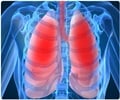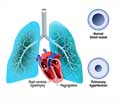Prescribing ambulatory oxygen in patients with chronic obstructive pulmonary disease (COPD) improves exercise performance.
Prescribing ambulatory oxygen in patients with chronic obstructive pulmonary disease (COPD) improves exercise performance, but not the quality of their daily life unless they have resting hypoxemia, according to researchers in Toronto.
“Ambulatory oxygen therapy is routinely prescribed for those who do not meet criteria for mortality reduction,” wrote Roger S. Goldstein, M.B., Ch.B., Professor of Medicine and Physical Therapy at West Park Healthcare Centre in Toronto, lead author of the study.“[This study] suggests serious problems with the indiscriminate use of oxygen to relieve day-to-day dyspnea in patients with COPD without resting hypoxemia.”
The study, which indicates that generalized treatment of COPD patients with ambulatory oxygen may be an unnecessary and inconvenient, and possibly even detrimental expense, appeared in the second issue for August of the American Journal of Respiratory and Critical Care Medicine, published by the American Thoracic Society.
For many patients, a diagnosis of COPD comes with a prescription for ambulatory oxygen, even when they do not meet the standard criteria for long-term oxygen treatment (LTOT). In 2002, Medicare paid $2.2 billion for home oxygen therapy.
The researchers conducted a series of double-blind N-of-1 trials wherein 27 COPD patients without resting hypoxemia underwent three pairs of two-week trials, using either oxygen or compressed air (as a placebo).
At the end of each trial period, patients were assessed with the Chronic Respiratory Questionnaire (CRQ) and St. George’s Respiratory Questionnaire (SGRQ), and given a timed walk test to assess their exercise performance. Neither the patients nor the assessors were aware of whether they had received oxygen or placebo during the trials.
Advertisement
When assessed as individuals who served as their own controls, four patients showed improvement in the dyspnea scores with oxygen, and only one was identified as a “clear responder,” whose overall scores and walk tests improved markedly on oxygen, and who requested early termination of the placebo phase of the trial during all three periods.
Advertisement
These results are consistent with those in previous studies, which have likewise found that improvements in exercise capacity and endurance do not translate into perceived benefits in dyspnea and quality of life. However, one investigation in patients who had completed a pulmonary rehabilitation program, did find differences in the CRQ, suggesting a benefit from oxygen to more active patients.
These findings raise important questions about identifying patients who stand to benefit from oxygen. “One approach to the issue is to restrict oxygen use to patients who show benefit from an N-of-1 trial,” the researchers suggest, noting that while the costs of such trials are not negligible, they are “considerably less than the cost of providing long-term ambulatory oxygen for patients who do not benefit from it.”
The study also “challenges us to learn what supplemental oxygen therapy can accomplish when coupled with an exercise program designed to potentiate oxygen’s effects,” wrote M. Bradley Drummond, M.D., and Robert A. Wise, M.D., of Johns Hopkins University School of Medicine, in an accompanying editorial.
“Continued efforts with innovative approaches...will allow the treatment of COPD to move away from the limited data of the past into a future where COPD no longer damages and shortens the lives of so many.”
Source-Eurekalert
JAY/B











